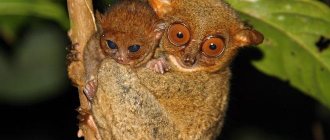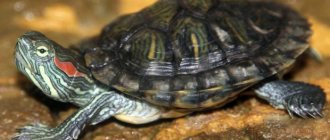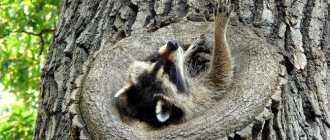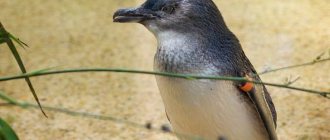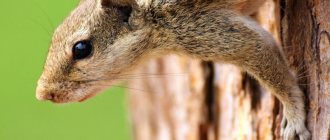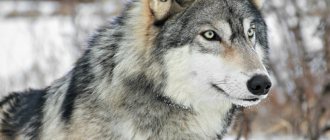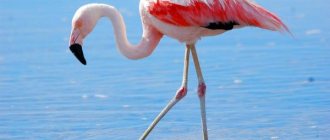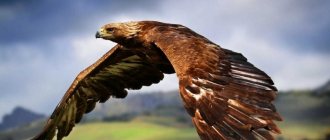- Rhino horn
The rhinoceros is one of the iconic animals of Africa, a kind of calling card of the “black
continent,” it is not for nothing that it is one of the “Big Five of Africa” along with the elephant, buffalo, lion and leopard, the same five animals that in the old days were the most honorable trophies of hunting safaris. The rhinoceros also has rather poor eyesight, but as they say, given his size and power, this is no longer his problem.
Description, structure, characteristics
The Latin name of the rhinoceros - Rhinocerotidae, is essentially identical to ours, since “Rhino” means “nose”, and “ceros” is a horn, resulting in “rhinoceros”, this name very aptly characterizes this animal, because the large horn on the nose, growing from The nasal bone is an integral attribute of all decent rhinoceroses (however, not decent ones either).
And also the rhinoceros, the largest land mammal after the elephant - the length of the rhinoceros is from 2 to 5 meters, with a height of 1-3 meters and a weight of 1 to 3.6 tons.
The colors of rhinoceroses depend on their species; in fact, at first glance, it seems that the names of rhinoceros species actually come from their colors: white rhinoceros, black rhinoceros. But here not everything is so obvious and unambiguous, the fact is that the real skin color of both white and black rhinoceros is the same - gray-brown, but due to the fact that these rhinoceroses like to wallow in the ground of different colors, which colors them different colors, and so did their names.
The head of a rhinoceros is long and narrow, with a steeply sloping forehead. Between the nasal bones and the forehead there is a concavity, somewhat similar to a saddle. The small eyes of a rhinoceros with brown or black pupils and their size look very contrasting against the background of their large head. As we already mentioned at the beginning, rhinoceroses’ eyesight is not important; they are only able to see moving objects from a distance of no more than 30 meters. In addition, the fact that their eyes are located on the sides does not give them the opportunity to properly examine this or that object; they see it first with one eye, then with the other.
But rhinoceroses’ sense of smell, on the contrary, is well developed, and it is on this that they rely most. Interestingly, the volume of the nasal cavity in rhinoceroses is larger than the volume of their brain. The hearing of these giants is also well developed; the ears of rhinoceroses are like tubes that constantly rotate, picking up even faint sounds.
The lips of rhinoceroses are straight and awkward, with the exception of the Indian and black rhinoceroses, which have a movable lower lip. Also, all rhinoceroses have 7 molars in their dental system, which wear out greatly with age; in addition to teeth, Asian rhinoceroses have incisors, which are absent in African rhinoceroses.
All rhinoceroses have thick skin, which is almost completely devoid of hair. The exception here is the modern Sumatran rhinoceros, whose skin is still covered with brown hair, and the woolly rhinoceros that once lived in our latitudes, which, together with the same woolly mammoth, unfortunately, has not survived to this day.
The legs of a rhinoceros are heavy and massive, each foot has three hooves, as a result of which it is very easy to recognize by the rhinoceros's tracks where these giants walked.
Lifestyle and behavioral characteristics
Males of almost all varieties of rhinoceroses prefer a solitary existence, free from any obligations. They spend only a few days a year, during the mating season, next to the female, after which they return to their bachelor life, without taking any part in caring for the offspring. But females rarely have the opportunity to be alone, because they are almost always busy raising cubs, so females often live with a baby, or even a small family consisting of three generations.
White African rhinoceroses are the only ones of their relatives who form semblance of herds of 15-18 individuals, which mainly include females with cubs. And the most interesting thing is that in such a female community there may be several males. But females agree to accept into the group only males who have reached old age, who are no longer interested in mating, and, accordingly, do not pose a threat to young babies.
Territorial and social behavior of rhinoceroses
Each rhinoceros has its own territory, which contains their pastures, resting areas and their personal water bodies. Representatives of African varieties also allocate a special area that serves as a restroom for them. Considering the fact that rhinoceroses are very attached to their territory, and spend almost their entire lives in one place, a huge pile of dung accumulates in such rhinoceros “toilets”, which serve as an additional signal to strangers that this area is occupied.
Each rhino is the owner of its own vast territory
The area of possession of male individuals can extend over 20-50 km2, while the territories of females are much more modest, occupying no more than 5-15 km2. Rhinoceroses jealously guard their personal territories from strangers, leaving marks on the borders of their piles of dung, and old males also spray the bushes and trees at the boundaries of their territories with pungent-smelling urine.
These giants are active in the morning and evening-night hours. At this time, the heat in their natural habitats subsides, and stinging insects bother them less, and they can easily feed on grass. During the day, rhinoceroses rest in shaded areas, and in intense heat they plunge into muddy, dirty water bodies. By the way, thick-skinned animals sleep very soundly, however, they can afford to take a serene nap, because predators do not even risk approaching sleeping rhinoceroses.
Rhino horn
The rhinoceros horn is his calling card and should be mentioned separately. So, depending on the species, a rhinoceros can have either one or two horns on its nose, with the second horn located closer to the head being smaller. Rhinoceros horns are made of the protein kerotin, by the way, human hair and nails, porcupine quills, bird feathers and armadillo shells are made of the same protein. Horns develop from the epidermis of rhinoceros skin.
When wounded, young rhinos recover their horns, but older rhinos no longer have horns. In general, all the functions of the rhinoceros horn have not yet been fully studied by zoologists, but for example, scientists have noticed such a curious fact - if the horn of a female rhinoceros is removed, she will cease to be interested in her offspring.
The owner of the longest horn is the white rhinoceros; it reaches 158 cm in length.
Lifestyle
All rhinoceroses live alone, without creating herds. The exception is white rhinoceroses, which form small herds consisting of a female and cubs. Male and female rhinoceroses gather together only during mating. Despite such a peculiar solitary lifestyle, rhinoceroses also have friends among other representatives of the animal world, so voloklui, small birds, constantly accompany rhinoceroses, pecking insects from their skin and
ticks, and at the same time, with their scream, bringing them closer to possible danger. It is not for nothing that in Swahili the name of these birds “wa kifaru” sounds like the protector of rhinoceroses.
Each rhinoceros has its own territory - a piece of pasture and a pond, which is its personal “land”; it jealously guards its territory. Rhinoceroses mark the boundaries of their “domains” with heaps of dung, which also serve them as a kind of “aromatic” landmark, allowing them to navigate in space and remain within the boundaries of their “land.”
Rhinoceroses are especially active, early in the morning and in the evening twilight, at this time they actively feed to get enough, which, given their large size, is not always an easy task. But day and night, rhinoceroses, as a rule, sleep on their stomachs or lying on their sides, or take their much-loved “mud baths.” Rhinoceroses sleep very soundly and they say that at this time you can easily sneak up on them and even grab them by the tail (but we still highly recommend that you do not do this))).
Rhinoceroses are cautious animals, therefore, including from us, people, they try to stay away, but when they sense danger, they always attack first, and they attack very fiercely. That is why, when meeting a rhinoceros, you need to behave extremely carefully and delicately; an angry rhinoceros can run at a speed of 40-45 km per hour, and nothing can stop such a running carcass; for example, it can quite easily ram and even turn over a light
automobile.
What does the white rhinoceros eat?
Photo: African white rhinoceros
The rhinoceros is a herbivore. Despite its threatening appearance and not entirely calm character, it feeds exclusively on vegetation and pasture. Living in the savannah, it is not always possible to find a sufficient amount of succulent vegetation, so the digestive system of these animals is adapted to absolutely any type of plant.
It can be:
- twigs of bushes or trees;
- all kinds of herbs;
- low growing leaves;
- thorny bushes;
- aquatic vegetation;
- roots and tree bark.
They have to absorb food quite quickly. Every day, in order to get enough, they have to eat about 50 kg of various vegetation.
Rhinos eat in the morning and late in the evening. They are afraid of overheating in the hot sun, so they spend the day in puddles, ponds, mud or the shade of trees. Rhinos are large animals and need to drink large amounts of water daily. For this purpose, they are able to overcome enormous distances of several tens of kilometers. Usually they try to carve out a territory with a pond, where they will go every day to drink.
In general, rhinoceroses have roads along which they move every day, either to eat, to drink, or to rest in the mud or shade. The thick skin of rhinoceroses allows them not only to consume thorny plants, which are always present in abundance, because no other animal claims them, but also to live and calmly move around these same plants, being so clumsy.
Also, the white rhinoceros can use its horn and break interfering tree branches. If there is not enough food on its territory, then it goes to explore other spaces for food and may leave its territory.
Nutrition
Rhinoceroses are herbivores, however, they are very voracious, so on average a rhinoceros eats up to 72 kg of plant food per day. The main food of rhinoceroses is grass and fallen trees.
leaves. Black and Indian rhinoceroses are not averse to eating shoots of trees and bushes. Sugar cane is the Indian rhinoceros's favorite food, while the Sumatran rhinoceros is very fond of various fruits, especially figs and mangoes.
Enemies in nature
The main enemy of rhinoceroses is, of course, man, who in the old days mercilessly exterminated these animals, including for the sake of their famous horns, which are believed to have various healing properties. They were exterminated to such an extent that now all 5 species of rhinoceroses are included in
Red Book, since due to their low numbers they are on the verge of extinction.
In natural conditions, other animals, given the size and cautiously suspicious disposition of rhinoceroses, try to avoid them. But baby rhinos may well be hunted by different predators: lions,
tigers, crocodiles. But they cannot cope with an adult large rhinoceros, which has thick skin and a sharp large horn.
Capable of easily driving away a lion or a tiger, the rhinoceros, however, turns out to be completely defenseless against various small parasites that bother him: lice, ticks, flies. The situation is saved by the rhinoceros's faithful friends - the rogue birds, who peck these parasites from his skin.
Population
The cost of the horn of this mammal on the black market is one of the most expensive in principle. By the beginning of the 2000s, not even ten percent of the former population remained, since poachers destroyed almost everyone. Humanity finally noticed the problem and decided to create nature reserves, laws and other measures to protect and save the species, but the population decline continues to this day. Alas, the current world is not adapted to full-fledged measures that can somehow stop the merciless murders. Recently, some subspecies have simply disappeared, although it would seem that bills and other protection measures have already been created.
In 2011, the western black rhinoceros species was declared extinct, and of the northern white rhinoceroses, only one individual remained alive worldwide.
Despite the limited number of individuals, there are full-fledged traditions and workshops in China or Vietnam that offer rhino horn carving services and also use them for medicinal purposes.
Types, photos and names
Well, the time has come to describe in more detail the 5 species of these horned giants that exist in nature.
White rhinoceros
This is the largest rhinoceros in the world, and, oddly enough, the least aggressive among rhinoceroses. Its body length is 5 m, height 2-3 m with a weight of 2-3 tons, although there are also heavy white rhinoceroses weighing 4-5 tons. This rhinoceros also has two horns, the main horn is the largest in the rhinoceros family, and in addition to it, there is another smaller horn closer to the head. The white rhinoceros lives in Eastern and Southern Africa, in countries such as South Africa, Mozambique, Zimbabwe, Uganda, and Botswana.
Black rhinoceros
This species of rhinoceros is extremely dangerous due to its aggressive nature. The approach of a person, even if it is an innocent tourist with a camera, can react quite nervously, so you should keep your distance from him. Just like the white rhinoceros, it has two horns, one large and the other small, but somewhat smaller in size. The body length of the black rhinoceros is up to 3 m. Another characteristic feature of the black rhinoceros is the presence of a movable black lip. The black rhinoceros lives in a number of countries in Western, Eastern and Southern Africa: South Africa, Botswana, Tanzania, Kenya, Angola, Namibia, Zimbabwe, Mozambique.
Indian rhinoceros
As you probably guessed, the homeland of the Indian rhinoceros is India, but in addition to it, Indian rhinoceroses also live in Nepal. The body length of the Indian rhinoceros is on average 2 m and with a body weight of 2.5 tons. The Indian rhinoceros has only one horn, and unlike African rhinoceroses, it is not sharp, but rather blunt and convex.
Sumatran rhinoceros
The only living species of rhinoceros whose skin is covered with small hair, which is why it is sometimes also called the “hairy rhinoceros.” It is also the most ancient among all rhinoceroses. The body length of the Sumatran rhinoceros is 2.3 m and weighs 2.25 tons. Among rhinoceroses, the Sumatran rhinoceros is the smallest, but despite this, it remains one of the largest representatives of the animal world of our planet. The Sumatran rhinoceros lives on the island of Sumatra (in Indonesia), also in Malaysia.
Javan rhinoceros
This rhinoceros is in particularly poor condition; according to zoologists, only about 50 individuals of the Javan rhinoceros have survived at the moment. It lives only on the island of Java in a reserve specially created for it, in which every effort is made for its subsequent conservation. The Javan rhinoceros is similar in size and build to the Indian rhinoceros, but its characteristic feature is the complete absence of horns in females. Only male Javan rhinoceros have horns. The folds of his thick skin are somewhat reminiscent of knight's armor.
Where does the white rhinoceros live?
Photo: Northern white rhinoceros
In the wild, white rhinoceroses live exclusively in Africa. Until recently, the habitat of the white rhinoceros was divided into two isolated parts - northern and southern, and the areas were isolated from each other and quite remote.
The southern part is located in the countries of Southern Africa:
- SOUTH AFRICA;
- Mozambique;
- Namibia;
- Zimbabwe;
- southeastern part of Angola.
The northern range was previously located in the Congo, Kenya and South Sudan. In 2022, the last of the males belonging to the northern subspecies died. Today, there are only two females left alive, so it can actually be considered that the northern white rhinoceros has been exterminated. In the southern part, everything is much better, and there are still quite a lot of animals there.
The white rhinoceros inhabits mainly dry savannas, but is also found in small wooded areas, with clearings in which low-growing grass grows. Prefers mostly flat terrain. White rhinoceroses are well adapted to the dry continental climate. They tolerate desert areas, although they try not to enter such areas. It is believed that a mandatory condition for a rhinoceros to live is the presence of a nearby body of water.
On hot days, rhinoceroses like to spend a long time in the water or take mud baths, and less often hide in the shade of trees. Therefore, sometimes white rhinoceroses are found near swamps. And much earlier they were even found in coastal areas. During times of drought, white rhinoceroses are capable of making long journeys over considerable distances. They do not like enclosed areas. Like other savannah residents, space is important.
Reproduction
Rhinoceroses reach sexual maturity in the 7th year of life. But a male rhinoceros can begin the process of copulation with a female and the process of reproduction only after he has acquired his own territory. Usually this process takes another 2-3 years of life. The mating season for rhinoceroses usually occurs every month and a half; during this period, the male begins an intensive search for a female, which is interesting, when the male is chasing a female rhinoceros, they can even fight. But then the female gives in to the pressure of the male, and mating occurs.
The pregnancy of a female rhinoceros lasts one and a half years, and only one baby is born to her. A newborn rhinoceros weighs 25 kg, but begins to gain weight very quickly. Interestingly, white rhinoceros babies are born with hair. After just a few days, little rhinoceroses are able to follow their mother, and after three months they eat plants. However, during this period, the basis of their diet is mother's milk. For a whole year, a female rhinoceros feeds her children with breast milk. It should also be noted that small rhinos do not have horns, which begin to grow in their 2-3rd year of life.
How do they reproduce?
Sexual maturity in rhinoceroses occurs at the age of 4-5 years. Females look for partners for mating immediately after maturation, and males first take part in mating games at 6-7 years of age.
The breeding season in rhinoceroses is not tied to a specific time of year: every 1.5-2 months, females are ready for fertilization, which is communicated to males with sharply smelling marks. Before conception occurs, the female spends several days looking closely at the applicant. After the end of the mating season, the couple disperses, returning to their territories.
Pregnancy in rhinoceroses lasts about 460 days, after which one calf is born. The baby gets on his feet almost immediately after birth. A few hours later he is ready to follow his mother.
The lactation period for female rhinoceroses lasts up to a year. One-year-old cubs do not leave their mother and remain with her until new offspring appear.
One female can give birth to no more than 8 cubs in her entire life. In this regard, the rhino population is recovering quite slowly and any sharp decline in numbers can lead to irreversible consequences.
MONKEY
Interesting Facts
hornbill viper, hornbill, hornbill iguana, hornbill fish. They all have horns, which makes them look like our today's hero - the rhinoceros.
Habitat
If previously African rhinoceroses inhabited almost the entire Dark Continent, and Asian subspecies lived throughout Asia, then due to poachers and the expansion of farmland, their natural environment has decreased significantly.
Once upon a time, rhinoceroses inhabited the entire territory of two continents
Asian rhinoceroses are found only in India, Pakistan, Nepal, the islands of Java and Sumatra, and may have survived in Bangladesh. Animals prefer to settle in swampy areas and tropical rainforests; they can also live on plains covered with lush vegetation.
The thick-skinned giants of Africa live in arid savannahs and woodlands, and their natural habitat extends to the following countries:
- SOUTH AFRICA;
- Mozambique;
- South Sudan;
- Congo;
- Namibia;
- Zimbabwe;
- Tanzania;
- Kenya;
- Angola;
- Zambia.
Although rhinoceroses live free lives, most of them are confined to nature reserves and national parks, where it is easier for police patrols and special forces to ensure that these animals do not become victims of poachers.
Video
And finally, an interesting video about crazy rhino attacks caught on camera.
Author: Pavel Chaika, editor-in-chief of Poznavaika magazine
When writing the article, I tried to make it as interesting, useful and high-quality as possible. I would be grateful for any feedback and constructive criticism in the form of comments on the article. You can also write your wish/question/suggestion to my email [email protected] or Facebook, with respect, the author.
Author page
This article is available in English - Rhino (Rhinoceros).
